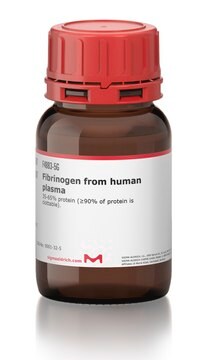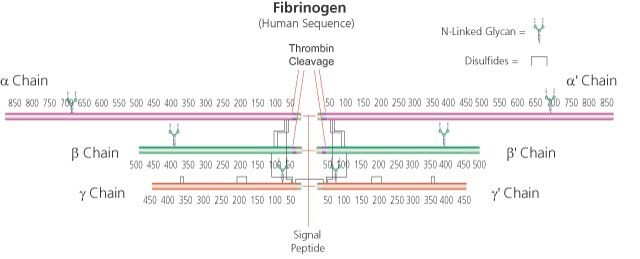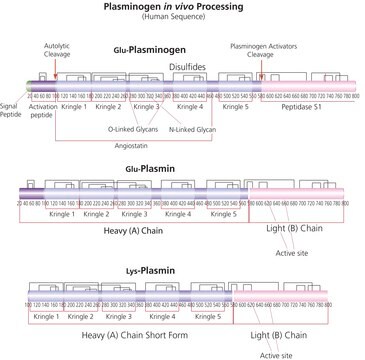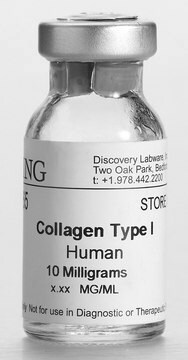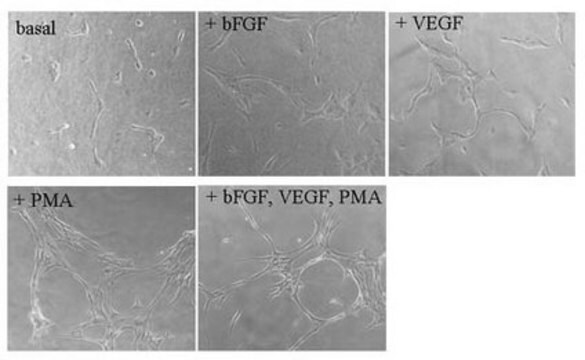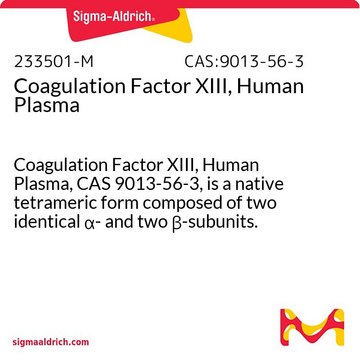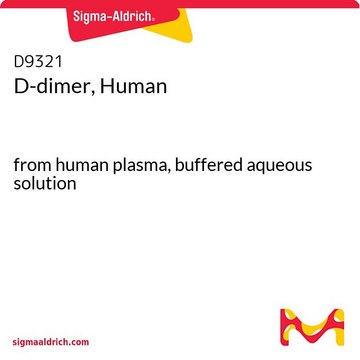F5386
Fibrin from human plasma
insoluble powder
About This Item
Productos recomendados
biological source
human plasma
Quality Level
form
powder
technique(s)
indirect ELISA: suitable
SMILES string
N(CC(=O)NC)C(=O)CN
InChI
1S/C5H11N3O2/c1-7-5(10)3-8-4(9)2-6/h2-3,6H2,1H3,(H,7,10)(H,8,9)
InChI key
BWGVNKXGVNDBDI-UHFFFAOYSA-N
General description
Application
- for in vitro cleavage of fibrinogen and fibrin
- as a reference for true component analysis (TCA) and principal component analysis (PCA) of Raman spectra
- as a reference in Raman spectroscopy to study the binding mechanisms and the binding efficiency of the different polyoxometalates (POMs)
Biochem/physiol Actions
Preparation Note
Disclaimer
Storage Class
11 - Combustible Solids
wgk_germany
WGK 3
flash_point_f
Not applicable
flash_point_c
Not applicable
Elija entre una de las versiones más recientes:
¿Ya tiene este producto?
Encuentre la documentación para los productos que ha comprado recientemente en la Biblioteca de documentos.
Los clientes también vieron
Artículos
Cell based angiogenesis assays to analyze new blood vessel formation for applications of cancer research, tissue regeneration and vascular biology.
Highlighting existing and novel fabrication methods for both, solid and hydrogel-based scaffold for tissue engineering applications.
The use of hydrogel-based biomaterials for the delivery and recruitment of cells to promote tissue regeneration in the body is of growing interest. This article discussed the application of hydrogels in cell delivery and tissue regeneration.
Nuestro equipo de científicos tiene experiencia en todas las áreas de investigación: Ciencias de la vida, Ciencia de los materiales, Síntesis química, Cromatografía, Analítica y muchas otras.
Póngase en contacto con el Servicio técnico
